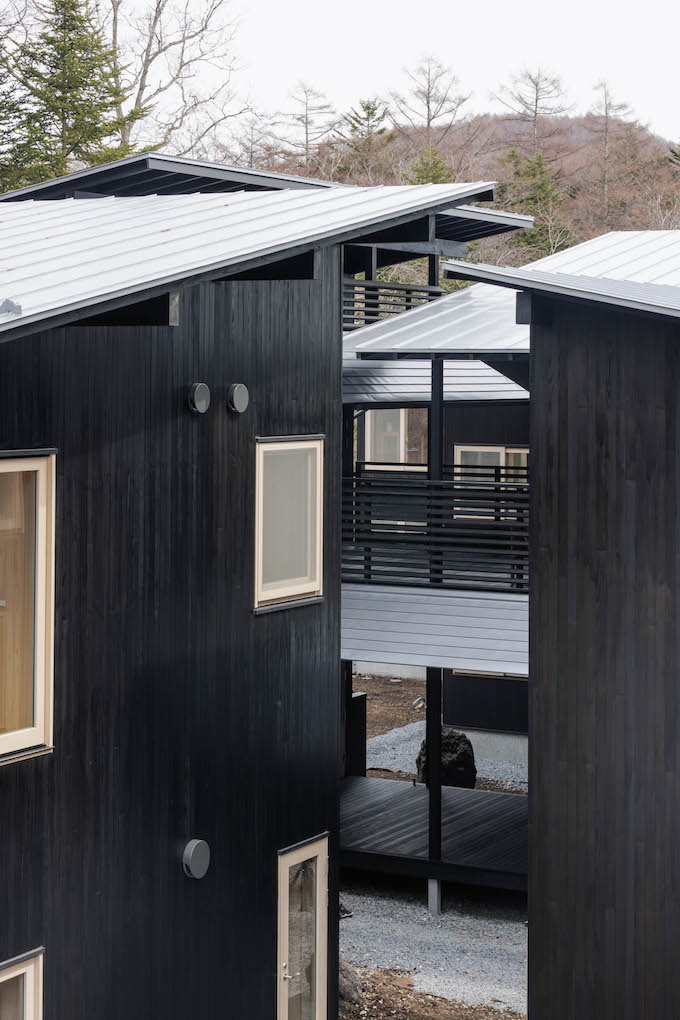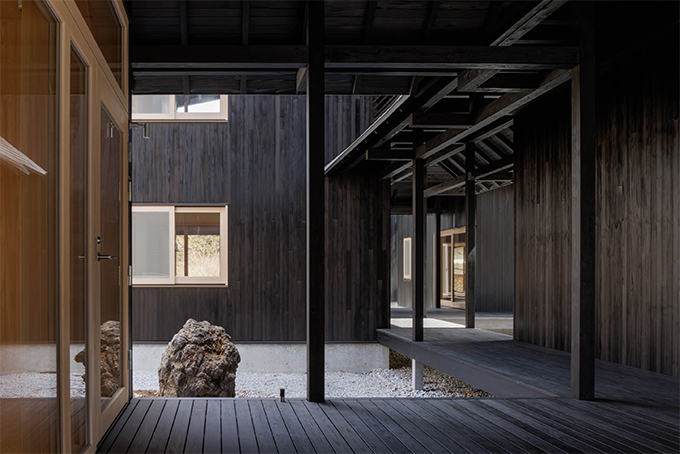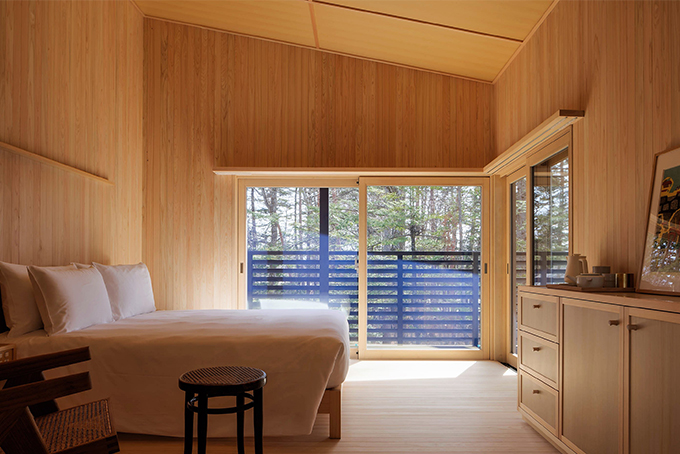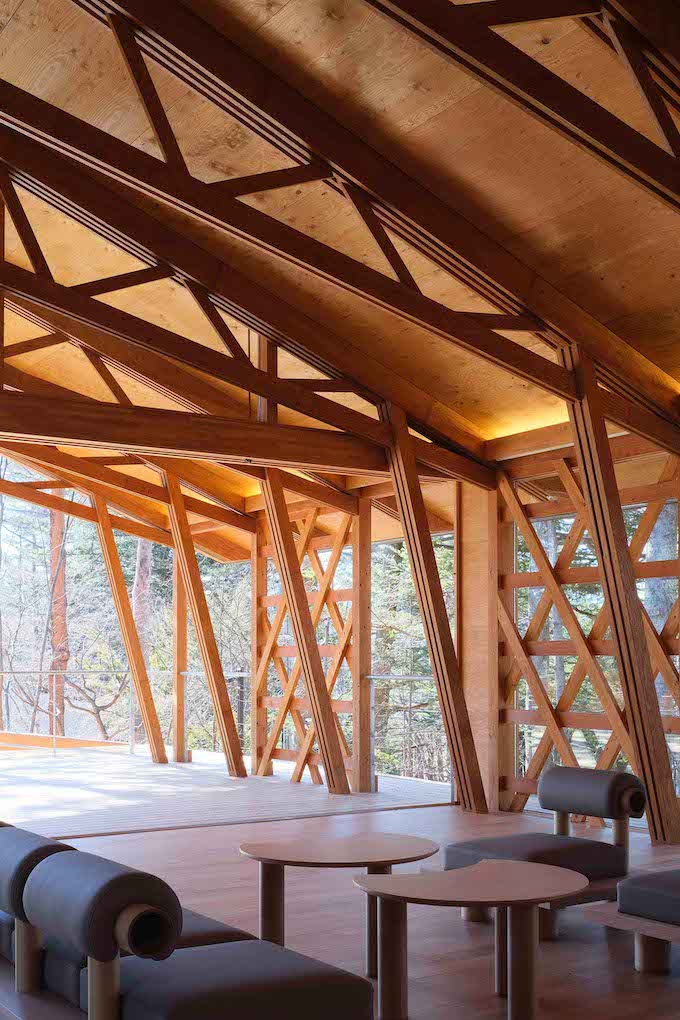The Japanese concept of ma is centred on the value of emptiness. It can be found in the silence between the notes which make music or the purposeful pauses in speech that make words stand out. You may even see it at the end of the respectful Japanese bow, when one deliberately holds at the deepest point of their bend to ensure there is enough ma to convey feeling.
In architecture and design, ma lives in the spaces where nothing is added, like the carefully positioned gaps between tatami mats in a traditional Japanese teahouse or alcoves left intentionally empty to display a single artwork or object. Engawa, a veranda-like space that surrounds a traditional Japanese house, exemplifies ma by offering a transitional zone. Instead of separating the inside and outside environments, it connects them—blending the man-made into nature.

Over time, the ubiquitous presence of engawa in Japanese architecture has quietly faded. With it, the traditions of ma have disappeared from modern Japanese buildings in pursuit of urban, mass-produced housing that prioritises privacy and security over openness and connection.
An hour’s shinkansen ride away from Tokyo is Karuizawa, a picturesque town nestled in the mountains near Nagano. Wrapped in lush forest, the small town is known for mild summers, a gorgeous natural landscape and easy access to activities such as hiking, golfing and skiing.
What many may not know is that Karuizawa is also home to a secretive collection of three intimately crafted boutique hotels, known together as Shishi-Iwa House. Located minutes away from one another by foot, the three interconnected properties offer under 13 guest rooms each, making the experience of taking up temporary residence in any one of them genuinely exclusive.

Opened in phases, each new Shishi-Iwa House is an architectural jewel envisioned by giants of Japanese design, such as Pritzker Prize winner Shigeru Ban, who is behind the first two. Known for his mastery of wood and socially driven approach to building construction, the universally lauded architect was given free rein to imagine what an ideal nature retreat melding Japanese tradition with modern considerations might look like. Wrapped in warm cedar wood, Shishi-Iwa Houses Nos. 01 and 02 have emerged with different design features, but share in being spacious, open to nature and in balance with ma.
Earlier this year, the newest instalment to the collection opened its doors. Designed by Pritzker Prize winner and Sanaa co-founder Ryue Nishizawa, Shishi-Iwa House No. 03 pays homage to traditional Japanese residential design.
Within a striking black facade built from burnt cedar, the main character of the House lives in rare Japanese hinoki cypress wood, which features prominently throughout the property’s interiors. Sourced from Gifu prefecture (care has been taken to use Japanese-sourced, carbon-friendly materials as far as possible), Nishizawa deploys the distinctive shade and fragrance of the prized wood to great effect.

The scent stands out in particular. Upon first entering, it is hard to believe that it’s not just incense or an unusually pervasive candle you are smelling, but the sweet, smoky aroma of wood. It comes as little surprise that hinoki is considered sacred in Japan, used for generations to build shrines, temples and palaces.
Shishi-Iwa House No. 03 consists of a network of 10 elevated pavilions, connected by seamless engawa, or floating walkways, that weave through the property. True to their traditional function, the engawa serve as a passage between the guest rooms and their surrounding courtyard gardens—filled with statuesque trees, gravel and a few boulders that had fallen from the mountain centuries ago, and now sit as preserved design features.
To call the hotel meditative might be an understatement. Guided by the concept of ma, Nishizawa deliberately creates emptiness throughout. Common areas are minimally but thoughtfully furnished with a few pieces of classic mid-century furniture, a scattering of rare antiques and the occasional ukiyo-e woodblock print. Each guest room features open windows on all four walls, allowing natural light to stream in continuously.

Inside the rooms, walls are left intentionally bare, producing a sense of solitude that strips away worldly concerns and pushes your mind inward. The seamlessness of design makes it feel almost as if the entire room has been constructed from one fluid piece of hinoki wood, lending a degree of austereness that is a visual statement in and of itself.
Balancing this desirable loneliness are the common areas, where guests are welcome to congregate and feel social once again. These are found on the second floor of Shishi-Iwa House No. 02 (the first floor is strictly for guest rooms). The crowning glory lies in Shola, the signature restaurant which reflects the hotel’s deep reverence of terroir.
Named after the endangered Shola Forest in South India, the restaurant’s culinary ethos is deeply rooted in seasonality and the beauty of nature. Sourcing from a labyrinthian network of Nagano prefecture’s native farmers and vendors, Shola puts provenance on the plate with exceptional refinement.

Executive chef Masashi Okamoto is renowned for his highly experiential approach to the seasonal menu. Having left his post as head chef at a leading hotel in Tokyo to come to Karuizawa in 2022, he leads a close-knit team of young and curiously cool staff at Shola. From the small group of servers to the sommelier, each team member has a unique special interest or skill which they manage to incorporate into the guest experience in some way.
With an ever-changing menu rooted in seasonality, dishes are prepared in a classic French culinary style with a modern Japanese twist. One appetiser might simply be beautifully plated grilled micro-vegetables, dressed with an assortment of exotic herbs and edible flowers, all sourced from a local vegetable farm. Next, a glistening piece of barely seared shorthorn beef arrives in an oyster shell. Topped with wasabi gratin and precisely marbled, it is a startlingly delicious bite.

This beef, too, is sourced from a local vendor the hotel partners closely with. Jun Ito is the 70-year-old cattle farmer at the head of Davos Ranch, located on a high plateau on Nagano mountain range and covering an area of 380 hectares for only 50 cattle. Here, the cows roam freely, feasting on natural grass pasture.
Japanese shorthorn cattle have become increasingly rare, with shorthorn Wagyu accounting for less than one percent of total Wagyu production in Japan. Still, instead of fattening them up quickly with commercial corn-feed, Ito’s priorities lie in providing his cows with high-quality feed that is made from soybeans, okara (bean curd), grape skins, little grains and other food by-products.

Duca Farm, meanwhile, is an organic vegetable farm located a 40-minute drive from the hotel. The family-run operation produces a plethora of delicious herbs, kaleidoscopic fruits and vegetables that taste unlike anything our local palate in Singapore has experienced. Turnips as sweet as apples, coriander spicy like it has been steeped in chilli—and farmers friendly enough to pick the produce for you to try on the spot, should you head down on one of the hotel’s organised excursions.
It is a symbiotic relationship that these local farmers and vendors share with Shishi-Iwa House. While they supply the hotel with delicious harvest and products exclusive to their region, they are proudly championed to a wider international audience, gaining name and recognition for their respective expertise, which otherwise goes unnoticed.
But it’s the guests who come out as the biggest winners. From witnessing Japanese tradition through landmark architectural experiments, retreating fully into gentle nature, and learning about the landscape of local agriculture in Nagano, Shishi-Iwa House affords the holistic immersion of a lifetime. Naturally, the hotel has become accustomed to repeat guests who may stay for months, finding it difficult to leave Karuizawa’s well-kept secret and beloved playground.
Book a stay at Shishi-Iwa House at shishiiwahouse.jp.





